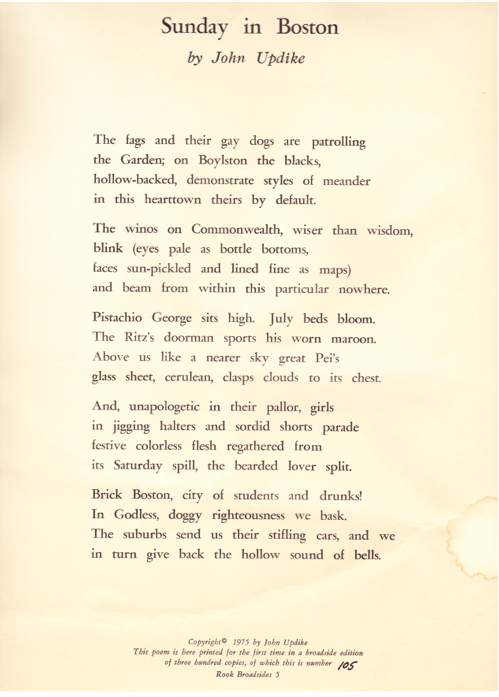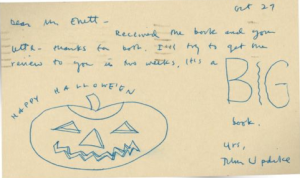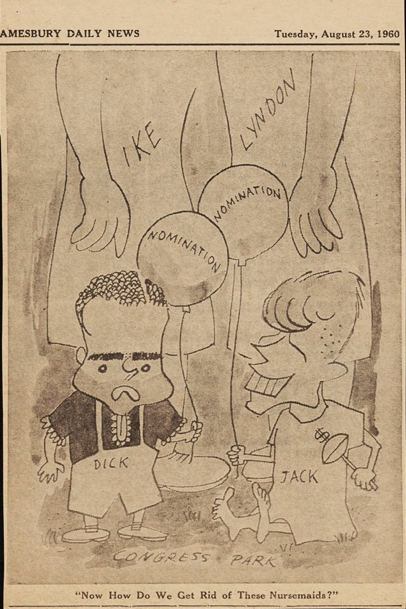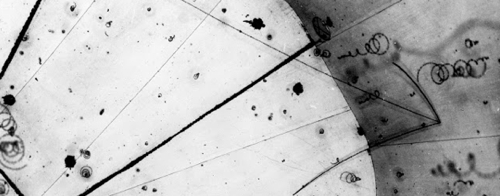
Physics Central, which links to American Physical Society Sites, yesterday posted “Physics in Verse: A John Updike Poem about Neutrinos.”
“There is a long history of poets taking Nature as their muse, from the call of the sea to the draw of the wild. But poems about physics phenomena are harder to find,” Tamela Maciel writes. “Updike was not a physicist, but he did a remarkable job describing the current view of the physics community, as this article from Symmetry magazine unravels.”
Cosmic Gall
by John Updike
Neutrinos, they are very small.
They have no charge and have no mass
And do not interact at all.
The earth is just a silly ball
To them, through which they simply pass,
Like dustmaids down a drafty hall
Or photons through a sheet of glass.
They snub the most exquisite gas,
Ignore the most substantial wall,
Cold-shoulder steel and sounding brass,
Insult the stallion in his stall,
And, scorning barriers of class,
Infiltrate you and me! Like tall
And painless guillotines, they fall
Down through our heads into the grass.
At night, they enter at Nepal
And pierce the lover and his lass
From underneath the bed—you call
It wonderful; I call it crass.
Pictured is “The first observation of a neutrino-induced reaction in a hydrogen bubble chamber. An invisible neutrino arrives from the right and strikes a proton where the three tracks join. The proton, a muon, and a pion then fly off in different directions.”
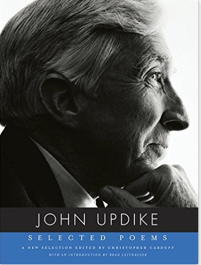 John Updike’s previously unpublished early poem “Coming into New York” appears on page 38 of the October 5 issue of The New Yorker, on sale at newsstands today.
John Updike’s previously unpublished early poem “Coming into New York” appears on page 38 of the October 5 issue of The New Yorker, on sale at newsstands today.


